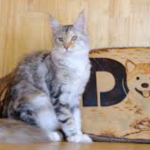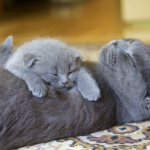Catnip, often regarded as a curious fascination among feline friends, remains a mystery for many pet owners. This mint family herb, scientifically known as Nepeta cataria, bears light-green foliage and delicate lavender flowers. Beyond its role as a cat magnet, catnip has found diverse uses, including herbal teas, cough remedies, and even serving as a primary ingredient in natural bug repellents.
The Science Behind Catnip and Feline Behavior
At the heart of catnip’s allure lies an oil called nepetalactone. This compound triggers distinct behavioral shifts in cats. When a cat encounters catnip, its vomeronasal gland—located in the roof of the mouth—gets activated, conveying scents from the mouth and nose directly to the brain. Nepetalactone mirrors feline sex hormones, eliciting behaviors reminiscent of a cat in heat. Responses to catnip are varied, with some cats exhibiting affectionate and relaxed behaviors while others display heightened playfulness or occasional aggression.
Who Does Catnip Affect?
Interestingly, not all cats respond to catnip’s effects; studies suggest roughly 60% of cats exhibit a behavioral reaction. Moreover, a cat’s response to catnip appears to have genetic underpinnings, with certain cats being inherently more responsive than others.
Understanding the Effects and Duration of Catnip
Typically, the effects of catnip last for approximately 10 minutes, after which the cat gradually returns to its usual state. There’s often a waiting period of about 30 minutes without exposure to catnip before a cat becomes responsive to it again. Storing catnip in an airtight container preserves its potency over time.
Catnip and Young Cats
For kittens, the sensitivity to catnip typically emerges between the ages of 6 months to 1 year, although exceptions exist, with some exhibiting sensitivity earlier or later in life. While ingesting small amounts of catnip is generally safe and may even support digestive health, excessive consumption can lead to digestive discomfort like vomiting or diarrhea.
Moderation is Key
Although catnip offers potential benefits, overindulgence can lead to health issues such as dizziness or difficulty walking. Therefore, using catnip in moderation and adhering to recommended guidelines is crucial to prevent adverse reactions in cats.
Varieties and Use of Catnip
Catnip comes in various forms—fresh and dried, sprays, and toys infused with dried catnip. Reputable brands like Yeowww!® and KONG® offer quality catnip products suitable for different sensitivities and preferences among cats.
Understanding the effects of catnip empowers pet owners to enrich their cats’ experiences while ensuring their safety and well-being.




